
Dr. Jacquelyn Meshelemiah, Associate Professor in the College of Social Work, is passionate about fighting human trafficking. She wanted her students to be passionate as well.
Meshemeliah knew, however, that the cost of a course (including expensive textbooks) can prevent some students from taking it, even if the subject is something that really matters to them.
"I wanted students to take my Human Trafficking course (Social Work 5005) and not have to pay $69+ for a textbook. I believe that excellent education should be affordable for all students."
With support from a university grant program, Dr. Meshelemiah and her doctoral student, Raven E. Lynch, reimagined their course materials with The Cause and Consequences of Human Trafficking: Human Rights Violations, a Pressbook they co-authored. In doing so, they were able to customize the materials for Social Work 5005 to better support their students—and save them money in the process.
This introductory guide will define open educational resources (OERs), outline core features of resources that are openly licensed, explain where you can find OERs, and provide strategies for evaluating and selecting them.
What is an OER?
There are many definitions for OERs, but the Affordable Textbook Act definition stands out as the most comprehensive.
The term "open educational resource" means a teaching, learning, or research resource that is offered freely to users in at least one form and that resides in the public domain or has been released under an open copyright license that allows for its free use, reuse, modification, and sharing with attribution. ~ H.R.2107 - Affordable College Textbook Act
A couple more popular definitions widely used in Open Education are as follows:
Open Educational Resources (OER) are teaching, learning or research materials that are in the public domain or released with intellectual property licenses that facilitate the free use, adaptation and distribution of resources. ~ UNESCO
...the term "open education" [is used] to encompass the myriad of learning resources, teaching practices and education policies that use the flexibility of OER to provide learners with high quality educational experiences. Creative Commons defines OER as teaching, learning, and research materials that are either (a) in the public domain or (b) licensed in a manner that provides everyone with free and perpetual permission to engage in the 5R activities– retaining, remixing, revising, reusing and redistributing the resources. ~ Hewlett Foundation
Each of these definitions draw on the power of an open license, a crucial element of OERs. These licenses are often Creative Commons (CC) licenses.
Have you used CC-licensed materials in your teaching or work? If not, you're missing an opportunity. According to Creative Commons, their "licenses give everyone from individual creators to large institutions a standardized way to grant the public permission to use their creative work under copyright law" (Creative Commons, 2020). As a user, the presence of a Creative Commons license on a copyrighted work helps you understand what you are permitted to do with that work, or the specifics of how you can reuse, modify, and share it. Using openly licensed resources—and sharing your own work through CC licenses—provides great benefit to you, other educators in your field, and the academic and teaching community as a whole.
Read more about Creative Commons licensing in A Simple Guide to Creative Commons.
The Five Rs of Open Education
Nicole Allen, long-time open education advocate and Director of Open Education for the Scholarly Publishing and Academic Resources Coalition (SPARC), defines OERs through a "Free + Permissions" framework. This means the educational resource is available at no cost and permissions are provided to the end user through its license perpetually.
Some advocates argue that in order for a resource to be truly open, the end user must have the ability to engage in the “5 Rs” as defined by David Wiley, former educator and founder of Lumen Learning.
The 5 Rs described below (Wiley, n.d.) mean the user has the right to:
- Retain, or make, own, and control copies of the content (e.g., download, duplicate, store, and manage)
- Reuse, or use and repurpose the content in a wide range of ways (e.g., in a class, in a study group, on a website, in a video)
- Revise, or adapt, adjust, modify, or alter the content itself (e.g., translate the content into another language)
- Remix, or combine the original or revised content with other material to create something new (e.g., incorporate the content into a mashup)
- Redistribute, or share copies of the original content, their revisions, or their remixes with others (e.g., give a copy of the content to a friend)
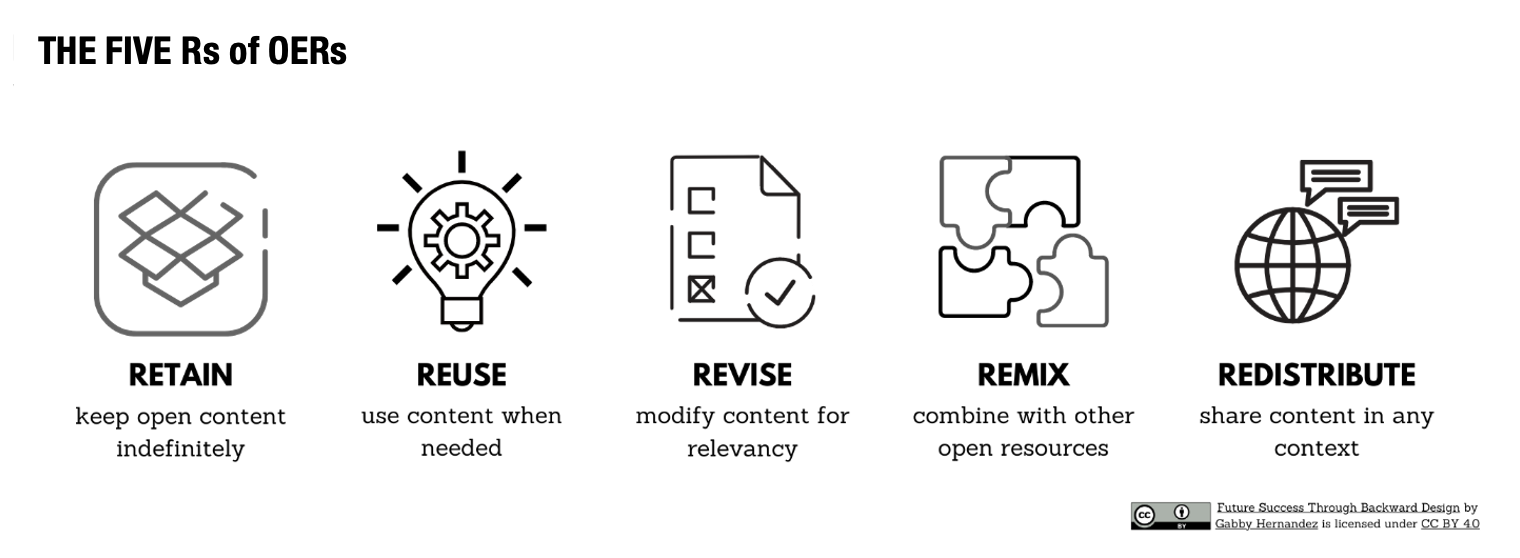
The Benefits of Using OERs
What most intrigues you about integrating OERs in your course? There are many reasons to consider OERs as they provide a multitude of benefits for educators and students alike (Hernandez, 2022).
OERs offer EDUCATORS the ability to:
- Have free and immediate access to materials
- Tailor course content based on student needs
- Align and customize materials to meet course outcomes
- Improve course content by revising materials to meet digital accessibility requirements and represent multiple perspectives
- Incorporate open pedagogical practices into a course
When incorporated effectively, OERs may even lead to better end-of-semester evaluation scores from students.
OERs offer STUDENTS the ability to:
- Save money through free or low-cost course materials
- Have access to course materials on day one of class
- Have sustained access to course materials perpetually after a course is over
- Use course materials that are more accessible and engaging
- Experience the same or improved student success compared to traditional textbooks
Indeed, OERs can support student retention rates and have been shown to lower drop, withdraw, and fail rates.
What can you do with OERs?
You might be interested in using OERs in your course, but uncertain how to go about it. There are a range of ways to incorporate open materials, with varying levels of time and effort required.
Which approach fits your needs?
Adopt
The simplest way to use an OER in your course is to adopt a high-quality, vetted, openly licensed textbook, or to compile a series of existing resources. This means finding and evaluating an OER(s) and using it as is.
Tip: Add the textbook or list of resources to your syllabus, make clear to students that the material is available at no cost, and explain how they can access it.
Adapt
If you find an OER for your course topic but it isn’t a perfect fit, you might consider adapting it to suit your needs. Check the Creative Commons license on the resource to see what you are allowed to do with it; if adapting it is allowed, consider updating information, rearranging the content, adding material to fill gaps, or removing content that doesn’t align to your course outcomes.
Alternatively, if there’s not a single resource to use as a starting point, you can make an OER course pack out of multiple openly licensed resources and customize them for your course.
Author
If you find that there aren’t many OERs available in your subject area, or you are already teaching primarily from materials you’ve made, consider authoring an OER in your discipline. This means you would create materials, or use your already created materials, and then choose to license them openly. Though this approach requires more effort, it will benefit you, your students, and other educators in your field in the long run.
Searching For and Evaluating OERs
How can you find openly licensed materials that might be a good fit for your course? There are many great places to search for OERs—this list is by no means comprehensive but will provide you with a good starting point.
Where to start your search...
Ohio Open Ed Collaborative
The Ohio Open Ed Collaborative has an OER Commons hub dedicated to the resources created as the result of an Ohio Department of Higher Education Innovation Grant.
Pressbooks Directory
Pressbooks Directory is a hub for all the public content published on Pressbooks through academic institutions. Explore the Ohio State UniversityPressbooks Catalog.
Open Textbook Library
The Open Textbook Library (OTL) offers up a repository of open textbooks that meet certain licensing criteria. Many of the books in the OTL are peer-reviewed by faculty.
OASIS
Created at SUNY Geneseo, this robust, integrated, and easy-to-use search tool will search over 300,000 different resources and over 100 different sources.
OER Commons
An easy to search collection of over 50,000 high-quality OERs. OER Commons also offers a user interface to create OER with their Open Author tool.
LibreTexts
The LibreTexts collection contains open textbooks and other OERs in Chemistry, Biology, Nutrition, Music Theory, Physics, Agriculture, and more.
MERLOT
Merlot is a good place to search if you want to start with your current textbook’s ISBN.
PhET Interactive Simulations
This is a great collection to start searching for openly licensed, interactive simulations for Math and Science.
Prepping Your Search
It's always a good idea to do a little prep work prior to a search to set yourself up for success.
- Make a list of current course goals and learning outcomes.
- Make a list of the concepts and topics you want to cover in your course.
- Make a pros and cons list of all the features you like and dislike about your current textbook or resource.
As you write these lists, ask yourself the following questions:
- What do I want students to learn from my course materials?
- What topics am I covering broadly in class?
- Where am I narrowing down on more niche content?
- What do I love about my current textbook? What do I hate about it?
- Are there chapters in the textbook that I don't use?
- Are there chapters that I always use?
- Do I want any specific features like callout boxes, reflection questions, or case studies to be included in my materials?
Conducting Your Search
Grab that list of topics and concepts you created in your search prep, and use it as a list of keywords to start your search. It is best to begin with a broad search when you're looking for OERs, and then narrow down your search terms as you get a feel for content of the repositories you are browsing.
For example, if I wanted to find an OER on the Norwegian Forest Cat, I might begin my search by looking for "cats." If I were looking for specific resources for the psychology of personality, I could start my search under the broader subject heading of "psychology" first.
As you explore various repositories, you'll get a sense of which keywords produce results and which don't. You'll also get a feel for how different collections are indexed, whether they use tagging systems, or if there are advanced search options such as filtering by subject, resource type, and so on.
Evaluating and Choosing OERs
To evaluate an OER, start by thinking about how you’ve evaluated other materials for your course in the past. You can apply those same principles to selecting OERs.
Keep in mind the following questions as you explore:
- Does the content cover my subject area appropriately?
- Is the OER free of major errors and spelling mistakes? Is it accurate?
- What license does the OER have? Will it allow me to meet the needs of my course?
- Is the text written so that it is clear and will meet my students’ level of understanding?
- Will the content of the OER be accessible for all students?
- Does the content show multiple perspectives or sides of crucial issues?
- Does the material represent a range of individuals and practices in my field or discipline?
- Will my students see themselves in the content?
You may find it useful to use a rubric to evaluate the OERs you find. Check out the following rubrics.
Reviewing Accessibility
You want any OER you select to be accessible, both in the sense that your students can access the material on the first day of class, and in that the material is created accessibly and can be easily used and navigated by all students, including those with disabilities. Evaluating the digital accessibility of OER materials is an absolutely crucial step in your search and selection process.
You might start with the OER Accessibility Toolkit’s Appendix Checklist for OER Accessibility and compare it to the resource you’re exploring. The toolkit is a robust guide to making materials more accessible for students.
Another excellent resource is the OER Accessibility Series and Rubric which offers guidance about accessibility and a rubric to help you evaluate your OERs for accessibility.
To learn more, check out Open Dialogues: How to Make Open Content Accessible, a video by the Centre for Teaching, Learning, and Technology (CTLT).
OERs from Ohio State
If you want to explore what an OER can be, be sure to check out the following examples created by Ohio State instructors through the former Affordable Learning Exchange grant program.
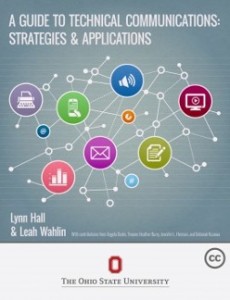
Title: A Guide to Technical Communications: Strategies & Applications
Author: Lynn Hall & Leah Wahlin
Description: A textbook focused on developing both technical and professional communication skills
License: CC-BY-NC Creative Commons Attribution NonCommercial
Location: https://ohiostate.pressbooks.pub/engrtechcomm/
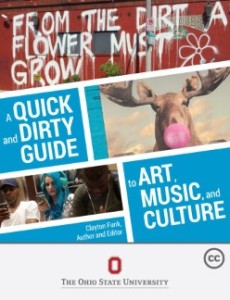
Title: A Quick and Dirty Guide to Art, Music, and Culture
Author: Clayton Funk
Description: A guide for Artist and Musician Biographies at http://aaep1600.osu.edu.
License: CC-BY Creative Commons Attribution
Location: https://ohiostate.pressbooks.pub/artandmusicbiographies/
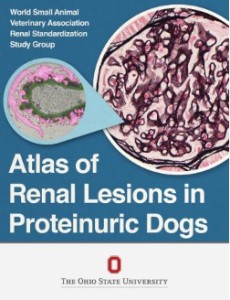
Title: Atlas of Renal Lesions in Proteinuric Dogs
Author(s): Rachel Cianciolo; Brown, Cathy; Mohr, Charles; Nabity, Mary; Van der Lugt, Jaco; McLeland, Shannon; Aresu, Luca; Benali, Silvia; Spangler, Bill; Amerman, Hayley; and Lees, George
Description: The goal of this Renal Pathology Atlas is to provide teaching material to veterinary pathologists and nephropathologists. Read more.
License: CC-BY-NC-ND Creative Commons Attribution NonCommercial NoDerivatives
Location: https://ohiostate.pressbooks.pub/vetrenalpathatlas/
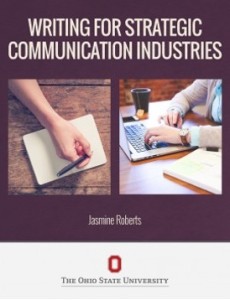
Title: Writing for Strategic Communication Industries
Author: Jasmine Roberts
Description: Good writing skills are important in today’s competitive work environment. This is especially the case for communication-related professions such as public relations, brand communication, journalism, and marketing.
License: CC-BY-NC Creative Commons Attribution NonCommercial
Location: https://ohiostate.pressbooks.pub/stratcommwriting/

Summary
Reimagining your course materials with open educational resources (OERs) is a great way not simply to save students money, but also to provide them with customized content that is easily accessible, better aligned to your course themes and topics, and updated to reflect current knowledge in your field.
- According to the 5 Rs, you should be able to retain, reuse, revise, remix, and redistribute an OER.
- To integrate an OER into your course, you can:
- Adopt it. Find, evaluate, and use a high-quality openly licensed textbook, or compile a series of existing OERs.
- Adapt it. If the license allows it, you can update, rearrange, revise, remove, and add material to an OER(s) to suit your course outcomes and needs.
- Author it. Create your own OER from newly developed or prior course content—be sure to openly license your material for others to use.
- To choose an OER for your course:
- Prep your search. Think about your course goals and outcomes, the concepts and topics you will cover, and what features you want (or don't want) in your textbook or materials.
- Conduct your search. Browse multiple repositories. Begin with broader search terms until you get a sense of which keywords produce the best results for your needs.
- Evaluate and choose resources. Evaluate whether the materials you find align to your course outcomes and appropriately cover your key topics.
References
Allen, Nicole, "OER and solving the textbook cost crisis" (2015). Library Presentations and Workshops. 2. https://digitalcommons.fairfield.edu/library-presentations/2.
Creative Commons. (2020, May 22). About CC licenses. Licensed under a Creative Commons Attribution 4.0 license at https://creativecommons.org/about/cclicenses/.
Hernandez, Gabby. (2022, Sep 6). Open Educational Resources (OER) & Textbook Affordability. University of Texas Rio Grande Library. https://utrgv.libguides.com/oer.
H.R.2107 - 116th Congress (2019-2020): Affordable College Textbook Act. (2019, April 4). https://www.congress.gov/bill/116th-congress/house-bill/2107/text.
Wiley, David. (n.d.). “Defining the ‘Open’ in Open Content and Open Educational Resources.” Opencontent.org. Licensed under a Creative Commons Attribution 4.0 license at https://opencontent.org/definition/.

